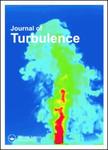版权所有:内蒙古大学图书馆 技术提供:维普资讯• 智图
内蒙古自治区呼和浩特市赛罕区大学西街235号 邮编: 010021

作者机构:Univ London Imperial Coll Sci Technol & Med Dept Aeronaut Turbulence Mixing & Flow Control Grp London England Univ Buenos Aires Fac Ciencias Exactas & Nat Dept Fis RA-1428 Buenos Aires DF Argentina Consejo Nacl Invest Cient & Tecn IFIBA RA-1033 Buenos Aires DF Argentina Univ Grenoble Lab Ecoulements Geophys & Ind CNRS UJF G INP UMR 5519 Grenoble 09 France
出 版 物:《JOURNAL OF TURBULENCE》 (湍流学报)
年 卷 期:2014年第15卷第5期
页 面:293-310页
核心收录:
学科分类:080704[工学-流体机械及工程] 080103[工学-流体力学] 08[工学] 0807[工学-动力工程及工程热物理] 0702[理学-物理学] 0801[工学-力学(可授工学、理学学位)]
基 金:French Agence Nationale pour la Recherche [ANR-12-BS09-011-03] COST action on 'Particles in turbulence' [MP0806] French-Argentinian ECOS-Sud program [A08U02]
主 题:turbulent mixing turbulent multi-phase flows
摘 要:Particle-laden flows are of relevant interest in many industrial and natural systems. When the carrier flow is turbulent, a striking feature is the phenomenon called preferential concentration: particles denser than the fluid have the tendency to inhomogeneously distribute in space, forming clusters and depleted regions. We present an investigation of clustering of small water droplets in homogeneous and isotropic active-grid-generated turbulence. We investigate the effect of Reynolds number (R-lambda) and Stokes number (St) on particles clustering in the range R-lambda similar to 200-400 and St similar to 2-10. Using Voronoi diagrams, we characterise clustering level and cluster properties (geometry, typical dimension and fractality). The exact same Voronoi analysis is then applied to investigate clustering properties of specific topological points of the velocity field of homogeneous isotropic turbulence obtained from direct numerical simulations at R-lambda similar to 220 and 300. The goal is to compare clustering properties of actual particles with those of such points in order to explore the relevance of possible clustering mechanisms, including centrifugal effects (heavy particles sampling preferentially low-vorticity regions) and sweep-stick mechanisms (heavy particles preferentially sticking to low-acceleration points). Our study points towards a leading role of zero-acceleration points and sweep-stick effects, at least for the experimental conditions considered in this study.